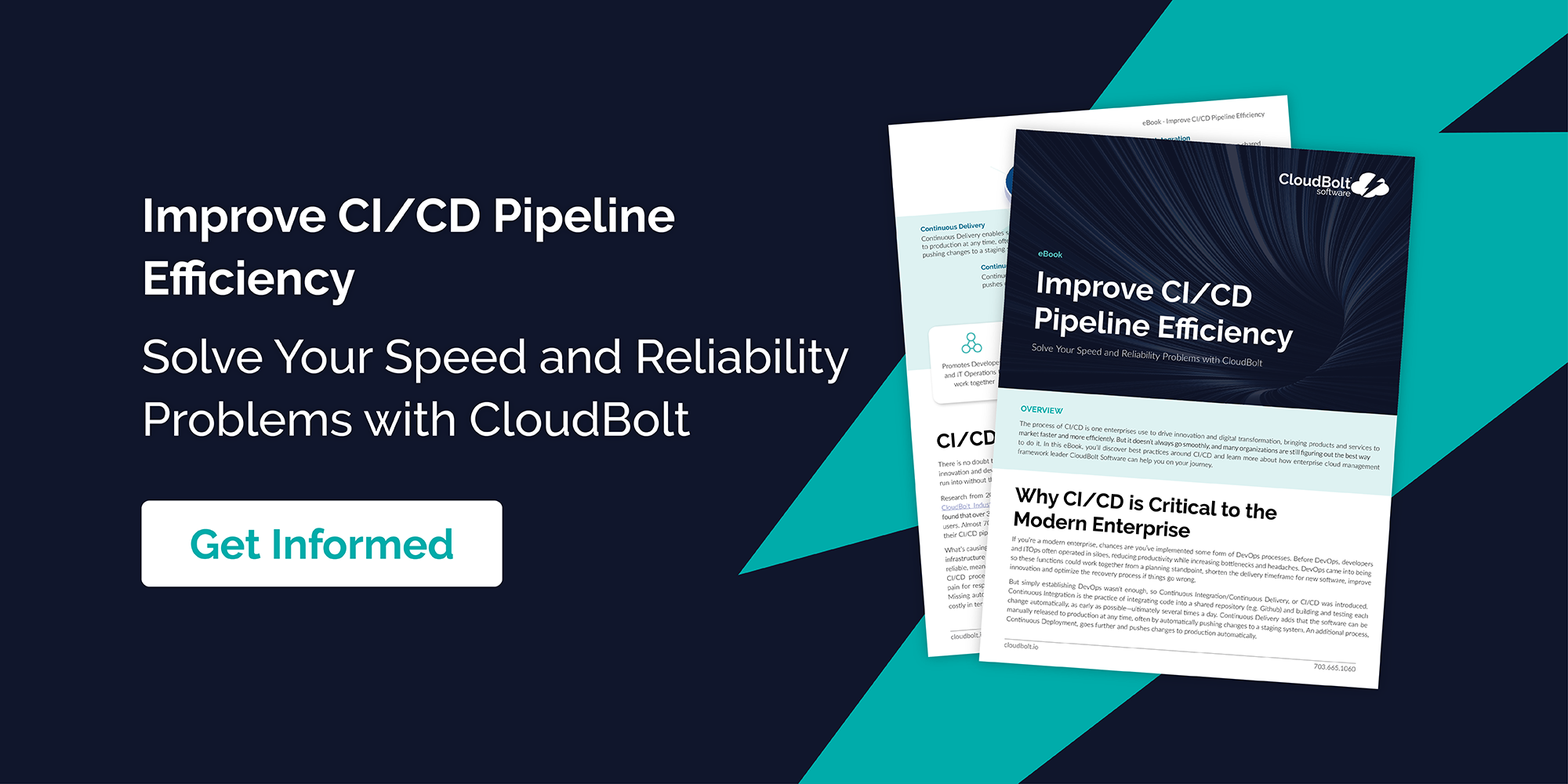Why CI/CD is Critical to the Modern Enterprise

If you’re a modern enterprise, chances are you’ve implemented some form of DevOps processes. Before DevOps, developers and ITOps often operated in siloes, reducing productivity while increasing bottlenecks and headaches. DevOps came into being so these functions could work together from a planning standpoint, shorten the delivery timeframe for new software, improve innovation and optimize the recovery process if things go wrong.
But simply establishing DevOps wasn’t enough, so Continuous Integration/Continuous Delivery, or CI/CD was introduced. Continuous Integration is the practice of integrating code into a shared repository (e.g. Github) and building and testing each change automatically, as early as possible—ultimately several times a day. Continuous Delivery adds that the software can be manually released to production at any time, often by automatically pushing changes to a staging system. An additional process, Continuous Deployment, goes further and pushes changes to production automatically.
Continuous Integration: CI is the practice of integrating code into a shared repository (e.g. Github) and building/ testing each change automatically, as early as possible – usually several times a day.
Continuous Delivery: Continuous Delivery enables software to be released to production at any time, often by automatically pushing changes to a staging system.
Continuous Deployment: Continuous Deployment goes further and pushes changes to production automatically.
CI/CD Can Still Fall Short
There is no doubt that while CI/CD has helped shore up many areas around digital innovation and development, it still has many pitfalls that organizations can easily run into without the right tools and infrastructure in place.
Research from 2021 indicates CI/CD hasn’t quite reached its full utility. CloudBolt Industry Insights surveyed over 200 global IT leaders and found that over 3/4ths identified themselves as only “intermediate” CI/CD users. Almost 70% of respondents said they need days or weeks to deploy their CI/CD pipeline.
What’s causing these issues? In many respects, the challenges are with the infrastructure around CI/CD. Just 11% find their CI/CD infrastructure reliable, meaning they see failures often, resulting in drawn-out and painful CI/CD processes. Manual processes for CI/CD were cited as the top pain for respondents, while detecting failures proactively was also cited. Missing automated processes and a lack of visibility after deployment is costly in terms of time and money.
See how CloudBolt can help. Request a demo.
Related Blogs

The Future of Cloud Cost Management and Optimization is Here with CloudBolt
It’s an exciting time to be in the Cloud Cost Management and Optimization space. The landscape is quickly changing as…

